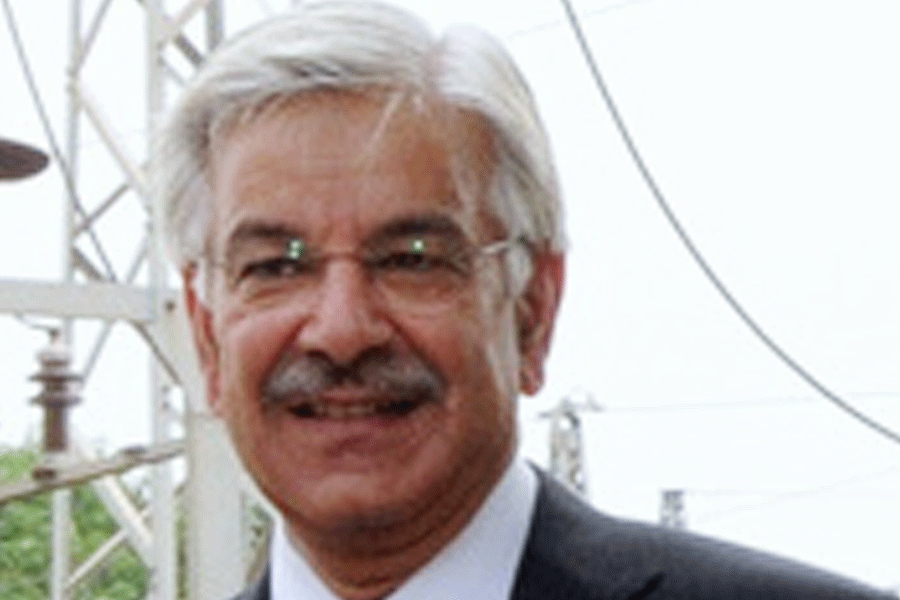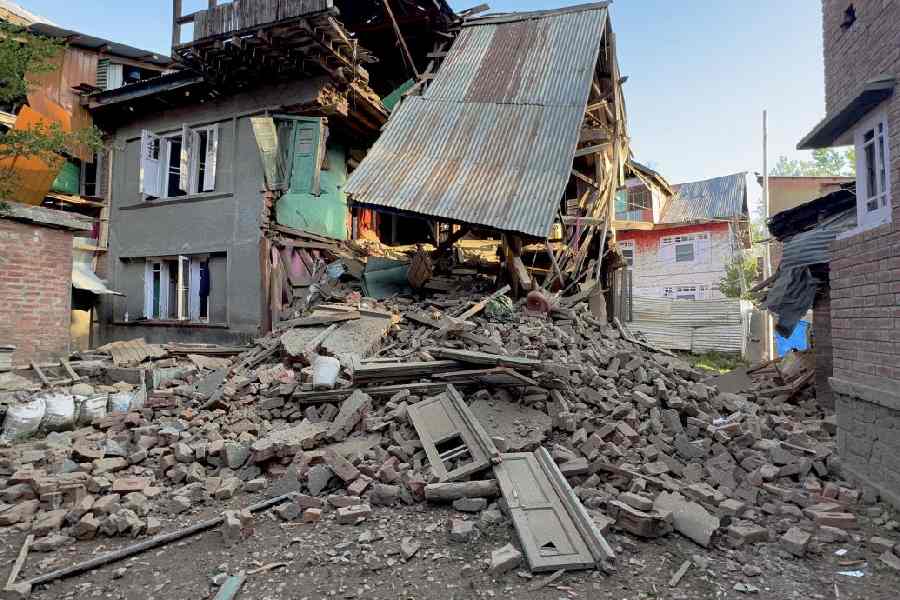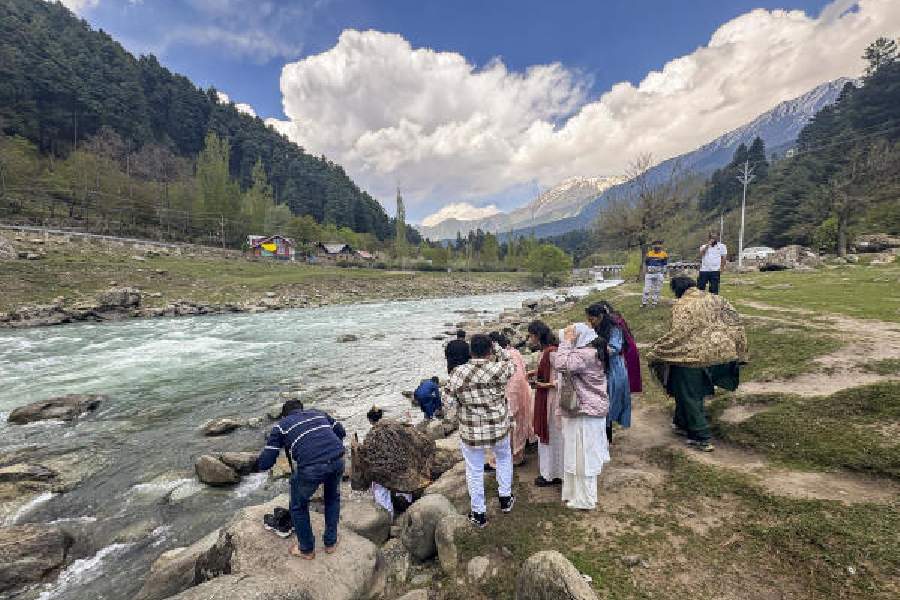 |
In this blazing summer, the drive from Delhi to Dehra Dun invokes elemental fear, with the outline of the horizon shimmering eerily, and the roadside villages entombed in sepulchral silence. And, ah, what a relief as the road winds up the Shivalik Hills to Mussoorie, with the temperature dropping at each of its upward turns. By then the vistas are dominated by the stately pines, and the heart of the hill town, stretching from the Landour Clock Tower to the old Library, has shown up through the wood.
A narrow driveway leads up to the vast expanse of a precipice of 11 acres, with the Gothic architecture of the Savoy. Guarded by the mighty deodars, it is arguably the “largest hill station hotel in India”, as the somewhat frayed publicity booklets tell. Its 100 rooms look desolate while the breathtakingly beautiful beer garden, commanding a panoramic view of the Doon Valley, seems absolutely empty. And, as I walk up to the reception, I notice the cobwebs.
Why is the Savoy, founded in 1902 by an Irishman in competition with the Cecil in Simla and the Carlton in Lucknow, bereft of patrons? I heard the stories later, but the questions are — for the moment at least — buried under the excellent hospitality of the owner, Anand Jawhar, who rests all the day on a high-back chair. He’s almost immobilised by a knee problem. Jawhar’s family owned the Spencer’s in Calcutta, the hotel famous for having hosted poet Michael Madhusudan Dutt on his way to literary stardom and alcoholic penury.
After the Jawhars took it over, it became the first to import Egyptian belly dancers for its cabaret shows. The stories about the hotel were even more overpowering than those of the owning family. Like of its founder, Cecil D. Lincoln, the Irishman who acquired the estate of “Mr Murdock’s Mussoorie School” and worked on it for five years to turn it into a hotel that, as everyone fancied, would compete with the Raffles in Singapore or even with the real Savoy in London.
Well, why not? With the present motor road from Dehra not ready then, Lincoln got the materials driven up the bullock cart road — the oak pieces that were joined to make the dining hall floor an envy of Indian hotels, the Edwardian furniture, the grand pianos, the barrels of cider and crates of champagne. The final building retained its period touch with the emblem of the old school — the three leaves in a clover — on its arches.
As I step into the room, a suite given at a throwaway price, the first shadow of the evening has embraced the hills. I notice that there is a lock on every other room in the wing. On inquiry, it appears that I am the only guest that day. It doesn’t matter, I argue, as I head for the “Writers’ Bar”, the hotel’s showpiece bar that has been written about at length by Ruskin Bond, its chief patron and the hill town’s celebrity author. It’s a bar dedicated to the famous authors who’d supposedly dropped by for a drink at least once — from Jim Corbett to John Masters (didn’t the author of Bhowani Junction serve the Gurkha Regiment at Dehra Dun?).
At the Writers’ Bar, as I sit with local expert, and Bond’s friend, Ganesh Saili, nursing a vodka and tonic, the season’s first thunderstorm lashes the hill. The town’s electric supply collapses at the first gust. Then come the thunderclaps and the lightning adders. I hear Saili’s voice, “Don’t move, there is no light and there’s nobody at the bar, this place is short of staff”.
I think of the desolate dining hall, with the grand pianos at its head, and the large billiard room, the tables manufactured by John Wilton Roberts of London in 1898, and imagine the lightning flashes flitting across their dark interiors. On my previous visits to Mussoorie, I heard several accounts of the piano suddenly coming to life at nights and the billiard room being filled with the clit-clat of the cue hitting the balls. Are my palms getting sweaty? “Savoy’s dubious reputation as a spooky place,” Saili says, “had its genesis in a Ruskin Bond story, In A Crystal Ball — A Mussoorie Mystery.” Is the Savoy supernatural a literary creation? Oh dear!
The story, apparently, is based on the extracts from a correspondence between Rudyard Kipling and Arthur Conan Doyle, in which Kipling wrote to the creator of Sherlock Holmes urging him to write a story about a “murder by suggestion” that had taken place at the Savoy in 1911.
It was in the summer of that year that Miss Frances Garnett-Orme, a 49-year-old spiritualist, had come to stay at the hotel with her companion from Lucknow, Miss Eva Mountstephen, a fellow spiritualist who specialised in seances and crystal-gazing. Miss Garnett-Orme had a tragic past, having been betrothed to a British officer of the United Provinces police who died before the nuptials. Her penchant for seances and table-rappings could well have resulted from it. However, Miss Mountstephen soon returned to Lucknow, and then to Jhansi, when, one morning, Miss Garnett-Orme was found dead in her bed. The door was locked from the inside. In an autopsy it was established that she’d been poisoned with prussic acid, a cyanide-based poison.
It could well be a suicide, but the police put it down as murder. The talk of the town, which perhaps goaded Kipling to write to Doyle, was that Miss Mountstephen had tampered with her friend’s bottle of sodium bicarbonate to add prussic acid to it. The not-so-plain tale from the hills had it that Miss Mountstephen had used her mind-bending power from a distance to make the victim add the poison to her medicine. Miss Mounstephen was arrested, though the court found her innocent. But the Chief Justice of Allahabad, in delivering the judgment, remarked that the true circumstances of Miss Garnett-Orme’s death would probably never be known.
As Saili leaves, the bartender finally arrives and flashes his torch to show me to my room, past the deserted hallways and the Gothic arches. The storm is still surging through the pines. As it is, its moan seems to be singing the tale of a perfect murder committed in a room nearby, 90 years ago.










